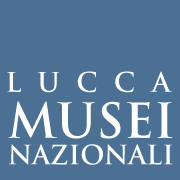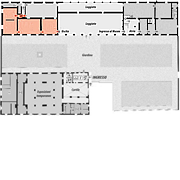Fully baroque are the works of two major foreigners artists, Giovanni Lanfranco and Guido Reni whom are promoted through the works of Paolo Biancucci, at the time, leading member of the local school of painting. In the following room is well documented the activity of the greatest exponent of the “Caravaggesque” painting in Lucca, Pietro Paolini.In the next room we have paintings of Girolamo Scaglia and Antonio Franchi, who were both born in Lucca. Franchi was a painter of a highest level who later became in Florence the official portraitist of the Medici court. The last hall of the museum houses paintings by Giovanni Domenico Lombardi, artist of elegant tones and probable teacher of Pompeo Batoni to whom we owe the Ecstasy of St. Catherine and the Martyrdom of St. Bartholomew. To them the museum has recently added the small but precious painting with The Ecstasy of St. Teresa bought on the antiquities market. Pompeo Batoni, born in Lucca in 1708, was the most celebrated Italian painter of the second half of the eighteenth century, and is the trait d’union between the collections of the Villa Guinigi Museum and the Mansi Palace where, in the new rooms on the second floor, continues the chronological order of exhibition. The portrait of the Mansi Archbishop is the first painting of the new contemporary section that goes from the Neoclassisicsm to the 20th Century local art.



